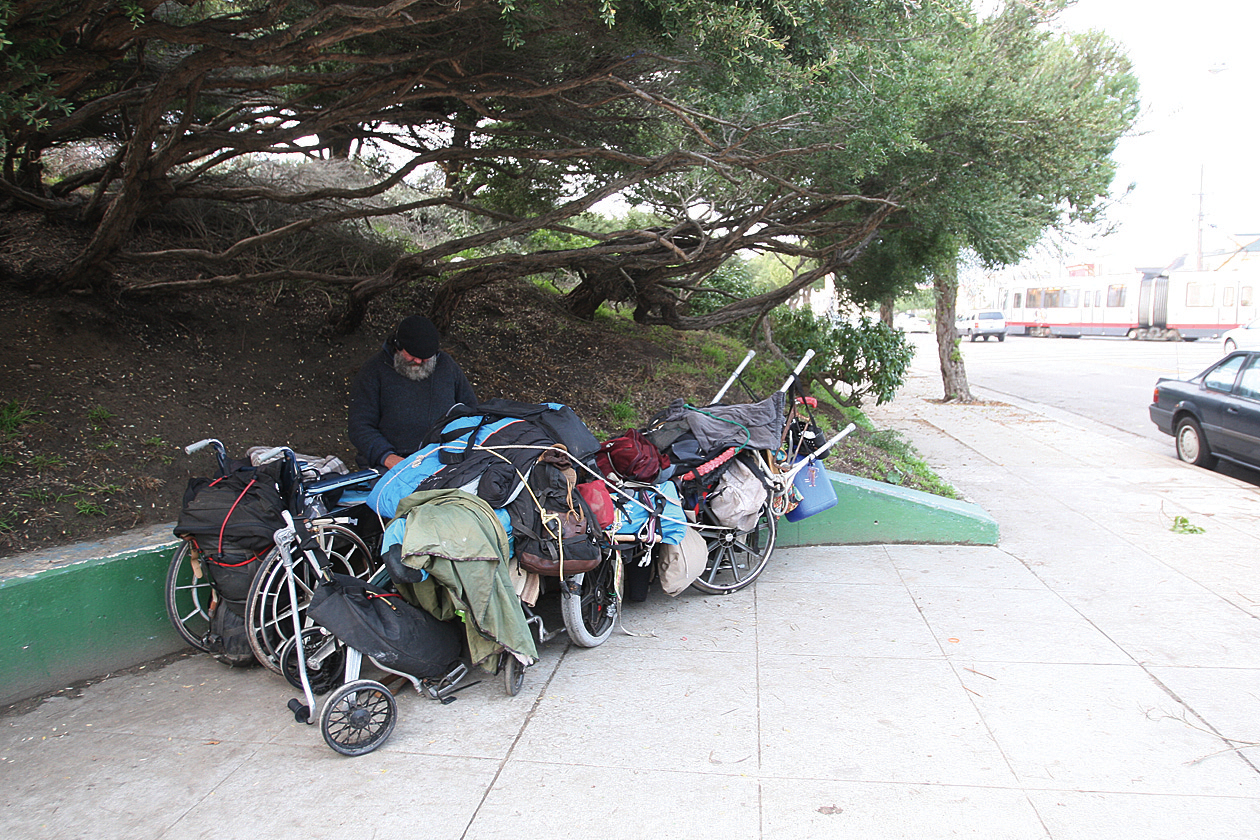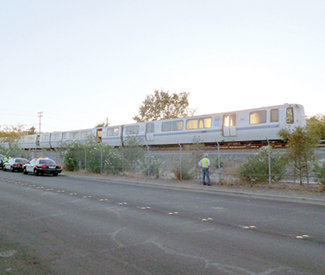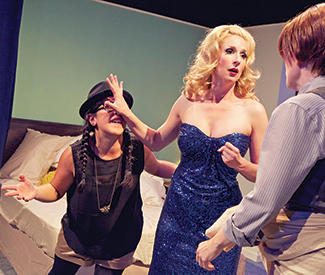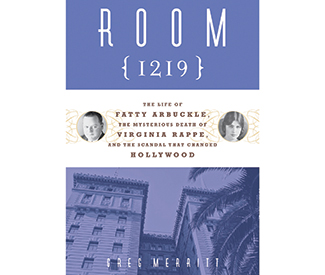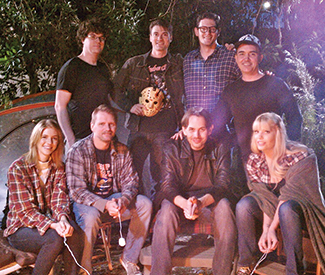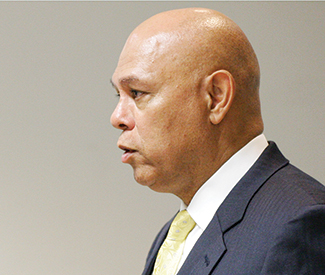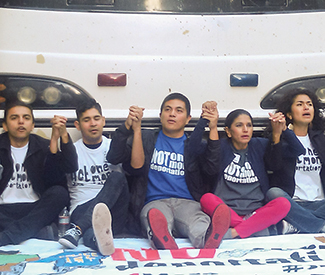Halloween listings below were compiled by Guardian staff. Submit items for the listings to listings@sfbg.com.
FRIDAY 25
Roller Disco Costume Party Women’s Building Auditorium, 3543 18th St, SF; www.brownpapertickets.com. 8pm-midnight, $10. Costumes + roller skates (rentals available) + groovy tunes by Black Rock Roller Disco + a full bar, and SF IndieFest reaps the benefits? Winning!
Ruth Asawa Dia de los Muertos Altar Installation Ruth’s Table, 580 Capp, SF; www.ruthstable.org. 6:30-8:30pm, $7-15. Artist-in-residence Monica Lee hosts an altar-making workshop for both individual artists and those who’d like to contribute to the Ruth Asawa alter, to be displayed Nov. 2 at the Marigold Project’s Dia de los Muertos Festival of Altars in Garfield Park (more info: dayofthedeadsf.org/marigold-project.html).
Some Thing Spooky The Stud, 399 Ninth St, SF; www.thestudsf.com. 10pm-4am, $8. Everybody’s favorite artsy-weirdo Friday night drag party ladles a little fright into your pants with performances by a dozen gender clowns and a special so-corny-it’s-terrifying DJ set by Hoku Mama Swamp.
Trannyshack Halloween: A Party DNA Lounge, 375 11th St, SF; www.trannyshack.com. 9:30pm-2am, $20. Trannyshack’s wild and kooky drag queens (led by the most unholy Heklina) join the cinematic mistress of camp gore, Peaches Christ, for this night of terror and hilarity. Performances by Raya Light, Exhibit Q, Fou Fou Ha, Elijah Minelli, many more.
SATURDAY 26
“Boo at the Zoo” Oakland Zoo, 9777 Golf Links Rd, Oakl; www.oaklandzoo.org. 10am-3pm, $11.75-15.75. Through Sun/27. Halloween, science, and zoo animals create the theme for this annual event, highlighted by a costume parade (11am and 1pm), a Wildlife Theater presentation focusing on creepy-crawly animals, face painting, a craft station to make Halloween creations for zoo-dwellers, and more.
The Devil Made Me Do It El Rio, 3158 Mission, SF; www.devilmademe.com. 10pm-late, $5 with costume, $10 without. A devilishly sexy holiday’s in store when burlesque favorites Red Hots Burlesque with old-time soul DJs Brown Amy and Jackie Sugarlumps (and drag hostess Lil Miss Hot Mess) for a horn-sporting good time.
“Halloween International Ball” Fairmont Hotel, 950 Mason, SF; halloweenpartysanfrancisco-full.eventbrite.com. 9pm, $65-75. Three separate dance floors and seven DJs spin a variety of music styles, plus a live salsa band and more.
Juanita More! Halloween Runway Massacre Jones, 620 Jones, SF; www.juanitamore.com. 9pm-2am, $25. Fierce drag mother of the nightlife scene Juanita More injects some glamour and fashion into the usual Halloween party proceedings. Get your looks together for a $3000 cash prize costume contest, a red carpet rollout, disco tunes from Robert Jeffrey and the Go Bang! DJs, a fabulous crowd, and special scary-lovely surprises.
“Monster Movie Salon presents Creature Comforts and Sublime Mysteries” Community Miracles Center, 2269 Market, SF; www.monstermoviesalon.com. 1-7pm, $75. Screenwriter and psychotherapist Doug Ronning leads this multi-dimensional workshop, featuring lectures illustrated by classic horror film clips, dynamic writing exercises, and more.
“Scary Halloween Storytelling” Bazaar Café, 5927 California, SF; www.bazaarcafe.com. 7pm, free. Peter Finch hosts this spooky night of tales; bring a 5-10 minute story, song, or performance piece to share.
“Spiral Dance Ritual” Kezar Pavilion, 755 Stanyan, SF; www.reclaimingspiraldance.org. 7:30pm, $29-150. Pagans and witches unite to welcome the new year at this 34th annual “ritual to honor our beloved dead and dance the spiral of rebirth.”
Michael Jackson “Thriller” Dance-Off and Costume Contest Studio One Art Center, 365 45th St, Oakl; www.thrilltheworldbayarea.com. 1-2:20pm (workshop to learn the dance, 11am), free but $5 donation requested (registration required). Prepare thyself for the funk of 40,000 years, because a “Thriller” flash mob is the best kind of flash mob, full stop.
SUNDAY 27
“Days of the Dead Community Celebration” Oakland Museum of California, 1000 Oak, Oakl; www.museumca.org. Noon-4pm, $6-15. This 19th annual event features craft activities, food, live dance and music, and a chance to view “The Tree of Life and Death: Dias de los Muertos 2013,” guest curated by muralist Eduardo Pineda and on view in the Gallery of California Natural Sciences.
“Let’s Talk: Satan, Serial Killers, and the Murder of a Child Star” Vortex Room, 1082 Howard, SF; Facebook: The Vortex Room. 9pm, $6.66. “Murderabilia expert,” artist, and cultural anthropologist Shane Bugbee holds forth on serial killers and other macabre subjects, including Satanism and the death of Dana Plato.
Spooktacular Halloween Party, Parade, and Trick or Treat in Japantown Japantown Peace Plaza, Post at Buchanan, SF; www.sfjapantown.org. Noon-4pm, free. Japantown beckons Halloween revelers with spooky crafts, haunted games, trick-or-treating at local businesses, a costume contest (2:30pm), and more.
TUESDAY 29
Dia de los Muertos in the Gourmet Ghetto Shattuck between Rose and Vine, Berk; www.anotherbullwinkelshow.com. 5-9pm, free. Foodies and friends are welcomed to this street fair, with a community altar, a wine and beer garden, free skeleton face painting, and more.
“Macabre Curios” ASI and CCSC Art Gallery, Cesar Chavez Student Center, SF State University, 1650 Holloway, SF; sfsustudentcenter.com/artgallery. Reception tonight, 5-8pm, free. Exhibit runs through Nov 8. Eleven SFSU artists, alum, and curio collectors participate in this All Hallows’ Eve-themed, found-object installation project. Opening night features live music, a scary-stories open mic, and creepy paper-doll projects; throughout the exhibit’s run, visit for daily horror-movie projections, “sacrifices” of candy, and “oddly-behaving” gallery staff.
WEDNESDAY 30
Eerie SF Public Works, 161 Erie, SF; www.publicsf.com. 7pm-1am, $5-15. Here’s a concept: a tour through a haunted graveyard of tech start-ups. Ghougle! YouTomb! Mummington post! OKLucifer! Mark Zombieberg! Artists, performers, dancers, porn actors, musicians and more come together with organizers Maxine Holloway and Val Killmore to bring to life all the horrors of the tech boom.
Housepitality Halloween F8, 1192 Folsom, SF. www.housepitalitysf.com. 9pm-2am, $10. One of the city’s best weekly dance parties (“Best Midweek Throwdown” 2013 Best of the Bay Winner) brings in Detroit-Windsor, Canada techno legend Daniel Bell for a deep, dark night of sounds that go boom in the night.
THURSDAY 31
Afrolicious Super Fly Halloween Elbo Room, 647 Valencia, SF; www.elbo.com. 9:30pm-2am, $10-15. Get retro-spooky with the Latin funk and super-groovy sounds of the Afrolicious party crew. Style out in ’70s-inspired costumes and get down: the live Afrolicious house band will be covering legendary Blaxploitation masterwork soundtrack Super Fly by Curtis Mayfield in its entirety. Far out!
All Hallows’ Eve DNA Lounge, 375 11th St, SF; www.dnalounge.com. 9pm, $13 advance. The annual party at the DNA Lounge is a showcase of its party talent, with DJs from club nights Bootie, Meat, Death Guild, New Wave City, Fringe, 120 Minutes, and more spinning goth and New Wave dance favorites and mashups. Plus an airborne performance by the high-flying Vau de Vire Society.
Back2Back Halloween Project One, 251 Rhode Island, SF; www.p1sf.com. 8pm-2am, $10. Beloved Wicked crew DJs Jeno and Garth celebrate nine years of their Back2Back party with some psychedelic house gems.
Black Mammoth Mighty. 119 Utah, SF; www.mighty119.com. 9pm-3am, $13-15. Buoyant Burning Man juggernaut Pink Mammoth gets dark for another one of its enormous blowouts, with DJs Galen, Kramer, Miguel Solari, Tyrel Williams, Gravity, and more.
“Creatures of the NightLife” California Academy of Sciences, 55 Music Concourse, Golden Gate Park, SF; www.calacademy.org. 6-10pm, $12. NightLife teams up with the Bay Area Science Festival for this spooky night hosted by Peaches Christ. Highlights include tips on how to survive a zombie attack, the latest on bioengineering (for any aspiring Dr. Frankensteins out there), monster make-up application, and more.
“Hacienda Halloween” Peralta House Museum of History and Community, 2465 34th Ave, Oakl; www.peraltahacienda.org. 5-7pm, free. Visit the Peralta Hacienda Historical House for a unique Halloween party, with stories of California’s early years, autumn vegetables, and maybe even an East Bay spirit or two.
Halloween at the Chapel The Chapel, 777 Valencia, SF; www.thechapelsf.com. 9pm-2am, $15. Bobb Saggeth, the female-fronted Black Sabbath tribute band, headlines this black mass with Haight Breeders (covering Misfits songs, natch).
Honey Soundsystem + No Way Back Halloween F8, 1192 Folsom, SF; www.eventbrite.com. 9pm-4am, $15. Two of SF’s sharpest DJ collectives combine forces to bring in the dark-edged house of NYC DJ Willie Burns and Split Secs. Should draw a great mixed crowd ready to dance.
House of Babes Halloween Holy Cow, 1535 Folsom, SF; www.thehouseofbabes.com. 9pm-2am, $10-$13. A young, fun shindig featuring a queer rainbow of hip-hop flavors from DJs Rapidfire, Pink Lightning, Dav-O, Boyfriend, and Jenna Riot, plus drag performances Amo A Nia, Rheal’Tea, and Vain Hein. Proceeds go to St. James Infirmary.
Lights Down Low Halloween Mezzanine, 444 Jessie, SF; www.mezzaninesf.com. 9pm-late, $30. Two amazing house headliners: The Magician, from France, who truly has a magic touch, and Germany’s Tensnake, genius of disco-tinged tunes. Should be bonkers stuff from the ever-reliable Lights Down Low party crew.
Minus Monster Mash Public Works, 161 Erie, SF; www.publicsf.com. 9pm-3am, $18. A spooky showcase of classic techno label M-nus, now based in Berlin, with gaiser and matador performing live and DJ Hobo warming up.
Monarch Monster Mash Monarch, 101 Sixth St, SF; www.monarchsf.com. 9pm-3am, $20. The Green Gorilla party DJs celebrate 18 years of Gorillaness with awesome house DJ Heidi from the UK.
The Monster Show The Edge, 4149 18th St, SF; qbarsf.com/EDGE. 9pm-2am, $5. Loveable drag queen Cookie Dough’s weekly drag show takes a killer turn, with blood-soaked performances by Mutha Chicka, Sugah Betes, Sue Casa, and more. Music by MC2. Will Cookie do her infamous Carrie number?
Nerd-O-Ween Churchill, 198 Church, SF; www.eventbrite.com. 8pm-2am, $20. It’s a nerd party, duh! Dress up as your favorite Poindexter and join the Motown on Mondays and San Franpsycho crews for some soulful hits and coke-bottle glasses.
SFJazz Halloween SFJazz, 201 Franklin, SF; www.sfjazz.org. 7:30pm, $35-55. Join jazz wiz Maceo Parker and his band for an upbeat concert, followed by a dance party with DJ Dancy Pants and a costume contest presented by drag dears Lil Miss Hot Mess and VivvyAnne ForeverMore.
Total Trash Halloween Bash Stork Club, 2330 Telegraph, Oakl; www.totaltrashfest.com. 9pm, $5-10. NoBunny as Bo Diddley! Shannon and the Clams as The Saicos! Monster Women as the Go-Gos! Yogurt Brain as Weezer! The fantastic annual four-day garage-rock Total Trash Fest kicks off this year with a great concept: rockers as other rockers.
Tubesteak Connection Halloween Aunt Charlie’s Lounge, 133 Turk, SF; www.auntcharlieslounge.com. 10pm-2am, $7. DJ Bus Station John’s great gay weekly party pays tribute to the bathhouse disco parties of the past. And the naughty spirits of those days will rise again on Halloween, with a $100 midnight costume contest hosted by the gorgeous Miss Donna Persona and a full dance floor of horribly cute boys.
FRIDAY 1
“Resurrect Sex Workers Fundraiser Day of the Dead Celebration” Fireside, 1453 Webster, Alameda; www.esplerp.org. 9pm, $15 single, $25 couple. All proceeds from this burlesque show benefit the Erotic Service Provider Legal, Educational and Research Project’s legal battles.

